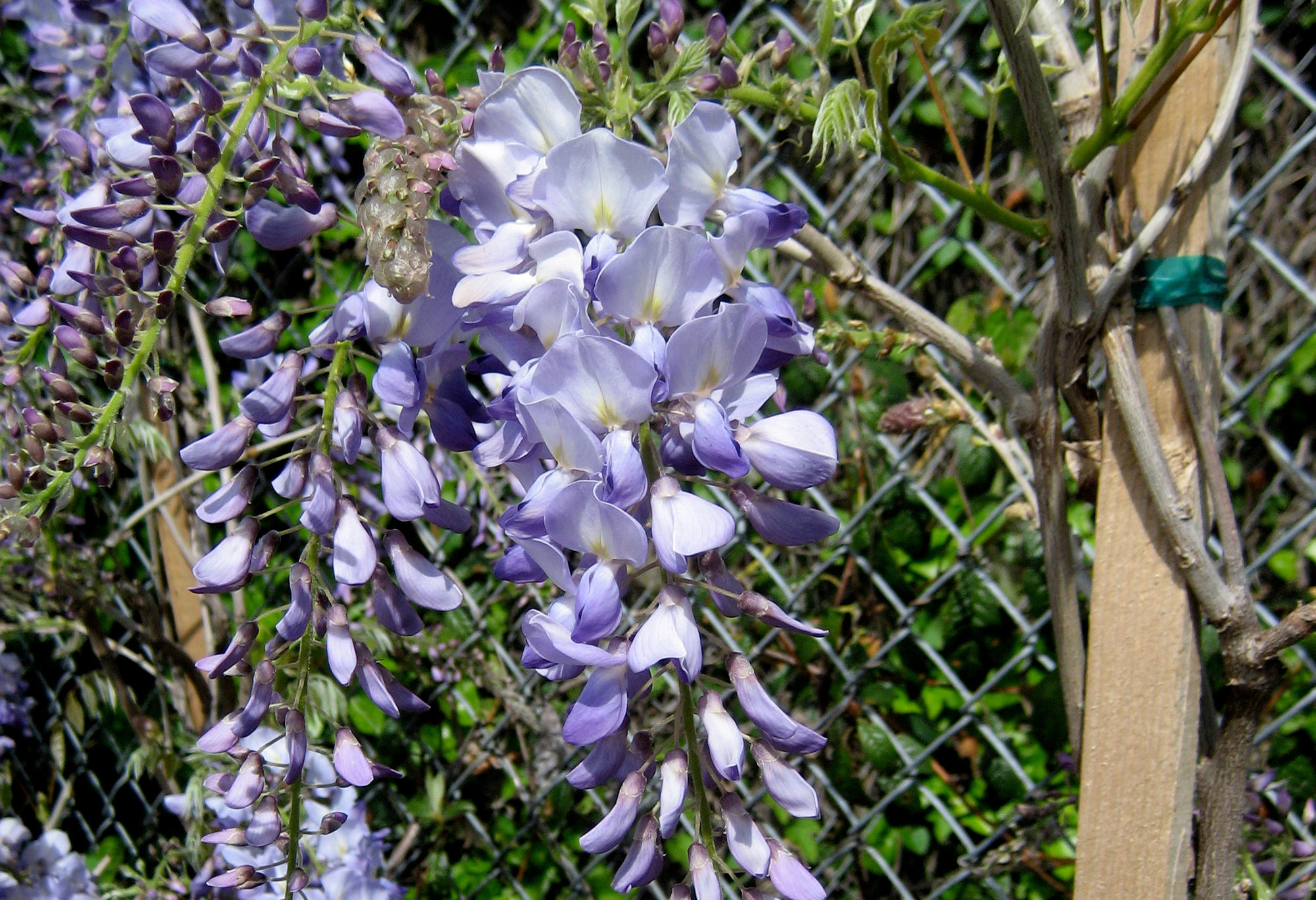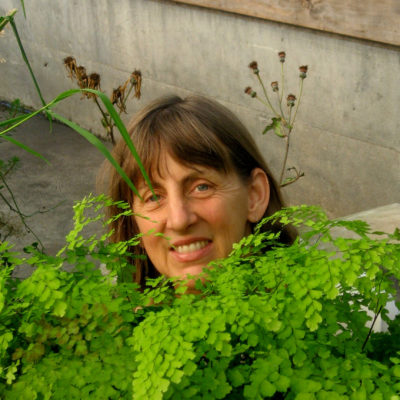In winter, wisteria is not at its most glamorous—the vines are leafless gray ropes, trapeze wires for squirrels. However, in early April, just as you reach for the hatchet, wisteria wakes up, and changes from homely winter pupa to gorgeous spring butterfly.
Chinese wisteria (W. sinensis) and Japanese wisteria (W. floribunda) are the two most commonly planted species. Both produce large, dangling clusters of fragrant sweet pea-shaped buds, usually lilac to purple, less often pink and white. Both the plump clusters of W. sinensis, which generally open all at once, and the elegant, elongated racemes of W. floribunda, which open more gradually, produce to a greater or lesser degree, a distinctive, somewhat musky, sweet perfume. Wisteria also is notable for its gorgeous foliage—compound, frond-like leaves that begin to grow as the blossoms appear. Shiny bronze at first, the foliage stays green until autumn, then fades to pastel yellow.
After its spectacular spring debut, wisteria turns from blossom princess into rapacious colonizer, so prune vines regularly to keep growth in check and to promote better flowering. In summer, cut new growth back to just a couple of leaves beyond the older (darker) woody stems. And on grafted plants, always remove any shoots that sprout below the graft, as growth from the rootstock will not produce blooming vines for many years (see below).
On hot days in summer and fall, wisteria’s velvety seedpods, which resemble woody Roma beans, will sometimes explode, scattering Roma bean-sized seeds. These seeds are poisonous; don’t add them to your soup. Falling seedpods and beans also produce some litter in the garden, but most consider this a small price to pay for the sensational spring flower show.
The best location for planting a wisteria vine is in full sun, in well-draining soil, though W. sinensis also blooms fairly well in shade. Also, like other plants in the Pea family, wisteria needs very little nitrogen fertilizer; in fact, too much nitrogen can impede flower production.
Wisteria plants are propagated from seed, from rooted cuttings and from grafted cuttings. Since seed-grown vines can take forever (seven-plus years) to bloom, Berkeley Hort stocks mostly cutting-grown or grafted plants, which bloom much sooner. This spring the nursery is offering several grafted or cutting-grown varieties, including:
Wisteria floribunda ‘Bicolor’
Lavender and white blossoms in long clusters.
Wisteria floribunda ‘Issai’
Bright and pale lavender blooms in long clusters.
Wisteria floribunda ‘Kyushaku’
Fragrant lavender-purple blooms, reputed to produce the longest clusters of all wisteria.
Wisteria sinensis ‘Kofuji’
Miniature selection with lavender-blue flowers and tiny leaves.
Wisteria sinensis ‘Blue Sapphire’
10” clusters of scented, deep lavender flowers.
Wisteria sinensis ‘Cooke’s Special Purple’
10” long, violet flower clusters.



